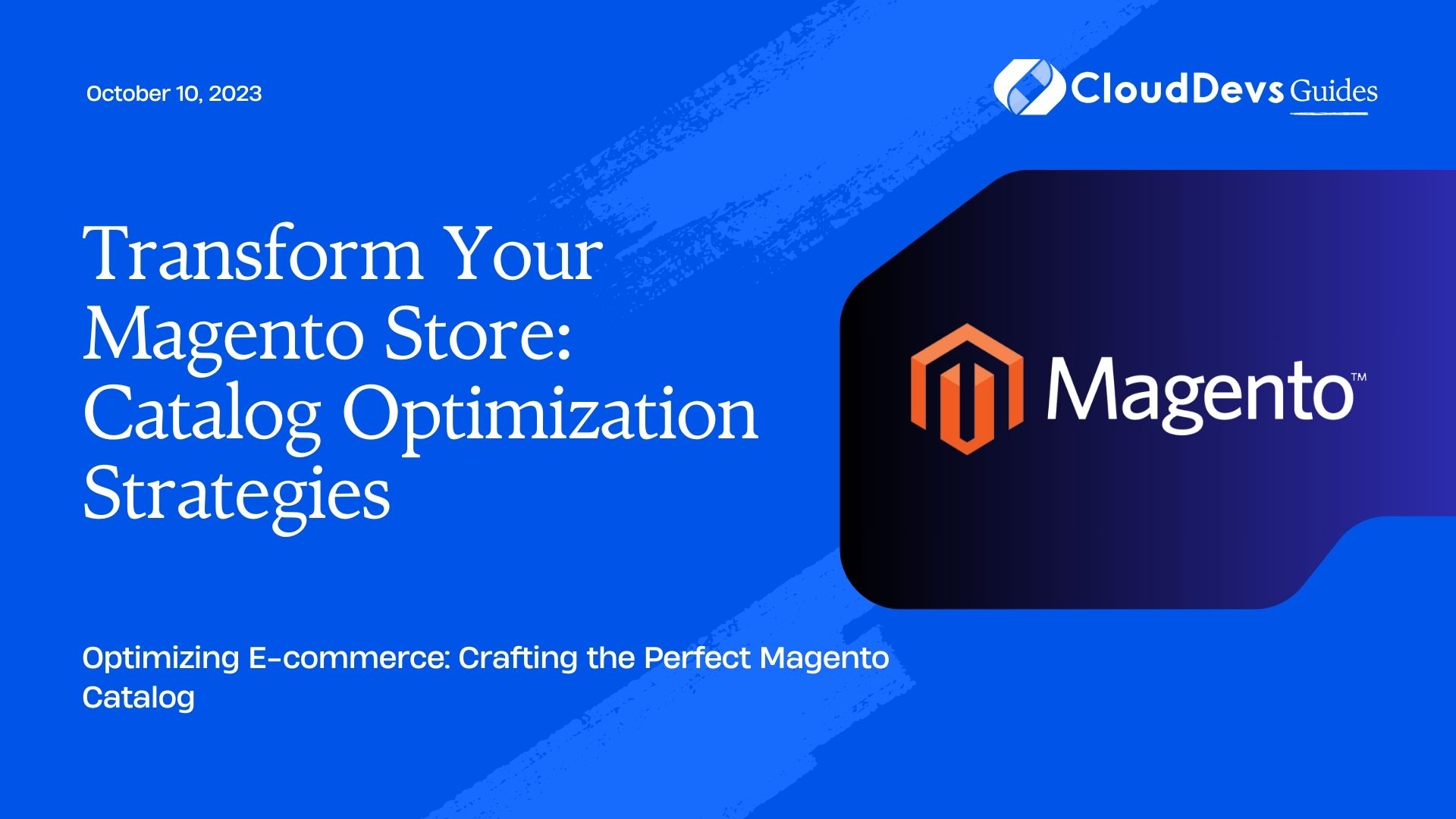Transform Your Magento Store: Catalog Optimization Strategies
Magento, known for its versatility and robustness, is a top-tier e-commerce platform that offers businesses an extensive range of features to manage and grow their online store. At the heart of any e-commerce website lies its product catalog, and Magento is no exception. A well-organized and optimized catalog can make or break the shopping experience for your customers.
In this post, we’ll delve into some effective catalog management tips for Magento store owners. These strategies, complemented by practical examples, will ensure that your product catalog is streamlined, user-friendly, and geared for success.
1. Understand and Organize Product Types
Magento offers various product types, including Simple, Configurable, Grouped, Bundle, and Virtual. Understand the nature of your products and categorize them accordingly.
Example:
If you’re selling T-shirts in multiple colors and sizes, use the Configurable product type. This way, customers can select their preferred color and size from a single product page.
2. Make Use of Attribute Sets
Attribute sets are a powerful feature in Magento that allow you to group a set of common attributes for similar products.
Example:
For electronics like mobile phones, you can create an attribute set that includes attributes like ‘Screen Size’, ‘Battery Life’, ‘Camera Megapixels’, etc. For books, the set might include ‘Author’, ‘Publisher’, ‘Publication Date’, etc.
3. Implement a Logical Category Structure
A well-thought-out category structure simplifies navigation and enhances user experience.
Example:
For a fashion store, the primary categories might be ‘Men’, ‘Women’, and ‘Kids’. Under ‘Men’, you can have subcategories like ‘Formal Wear’, ‘Casual Wear’, ‘Accessories’, and so forth.
4. Optimize Product Images
High-quality images with zoom-in capabilities enhance product visualization.
Example:
If selling furniture, ensure images showcase the product from multiple angles and allow customers to zoom in to see finer details like texture and material.
5. Regularly Update Product Descriptions
Descriptive, clear, and concise product details can enhance the SEO and user experience.
Example:
For a skincare product, detail its benefits, ingredients, usage instructions, and any certifications (e.g., organic, cruelty-free).
6. Manage Inventory Efficiently
Magento’s inventory management allows you to set thresholds for stock availability.
Example:
Set a ‘low stock’ notification for popular items to ensure you restock before running out, minimizing potential lost sales.
7. Implement Tier Pricing
Encourage bulk purchases by setting tier prices.
Example:
Offer discounts on wine bottles if a customer buys in bulk, say 10% off for six bottles and 15% off for 12 bottles.
8. Use Cross-Selling and Up-Selling
Enhance sales by suggesting related products or superior versions of the current product.
Example:
If a customer is looking at a laptop, you can cross-sell with a suggestion for a compatible mouse or up-sell by showcasing a higher-end laptop model.
9. Optimize for Mobile
Ensure your catalog is mobile-responsive. With a significant chunk of users shopping on mobile devices, your catalog needs to look and work perfectly on smaller screens.
Example:
Test product display, image zoom-in features, and checkout processes on various mobile devices to ensure seamless shopping.
10. Regularly Review and Clean Your Catalog
Eliminate outdated products, update stock, and review categories periodically.
Example:
If you introduced a new range of organic teas and they’ve been selling well, consider creating a dedicated category for them, highlighting their popularity.
11. Enhance Search Functionality
A potent search function can drastically improve the shopping experience.
Example:
Implement auto-suggestions, correct typos automatically, and show relevant product results. If someone types “bluw jeans”, the system should understand and show results for “blue jeans”.
12. Leverage Product Reviews and Ratings
Encourage customers to leave reviews and ratings. They not only enhance credibility but also provide additional content for SEO.
Example:
Offer a small discount or loyalty points for customers who leave genuine reviews on purchased products.
Conclusion
An optimized product catalog is a cornerstone of a successful e-commerce website. Magento, with its extensive features, offers store owners all the tools they need to build and manage an effective catalog. By leveraging the above tips, you can ensure that your Magento store delivers a seamless, enjoyable, and conversion-optimized shopping experience for all your customers. Happy selling!
Table of Contents







